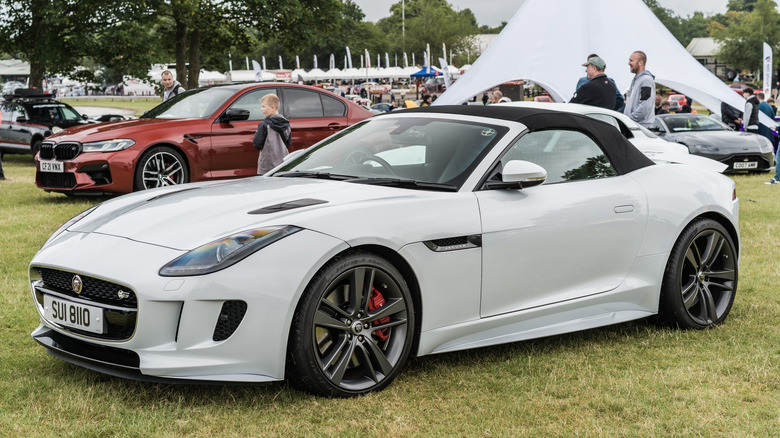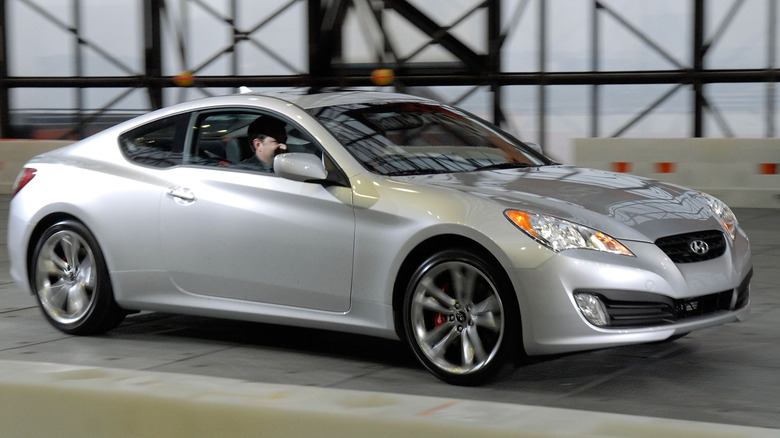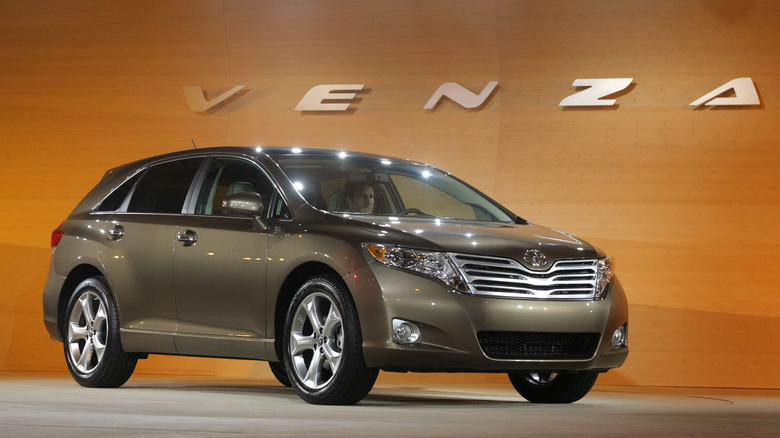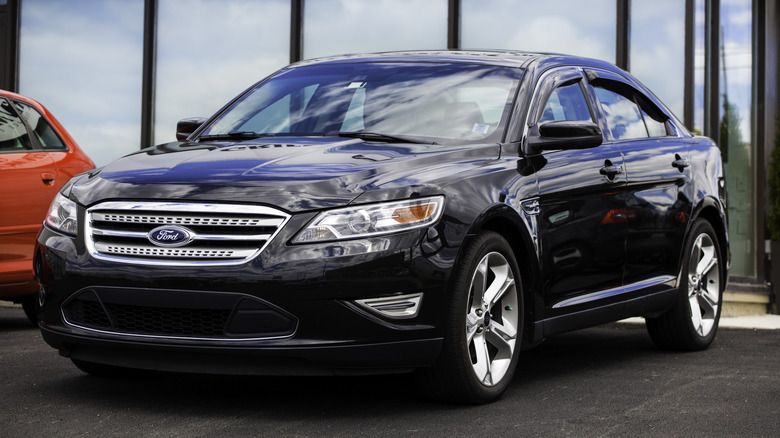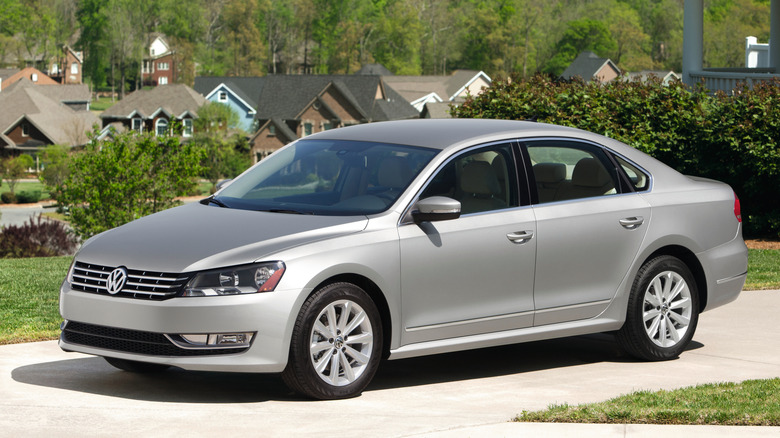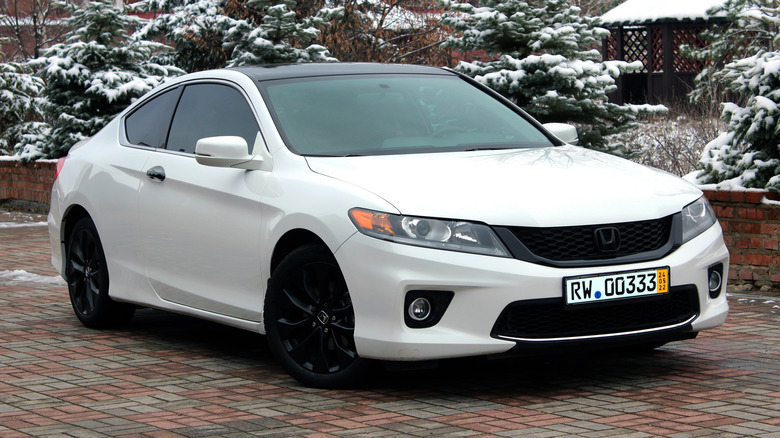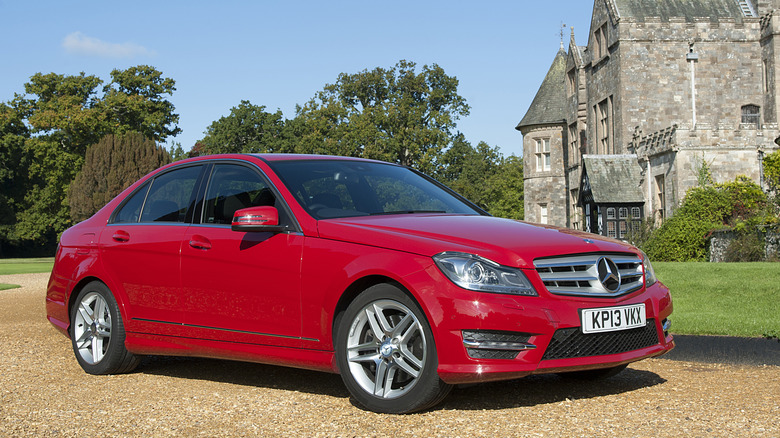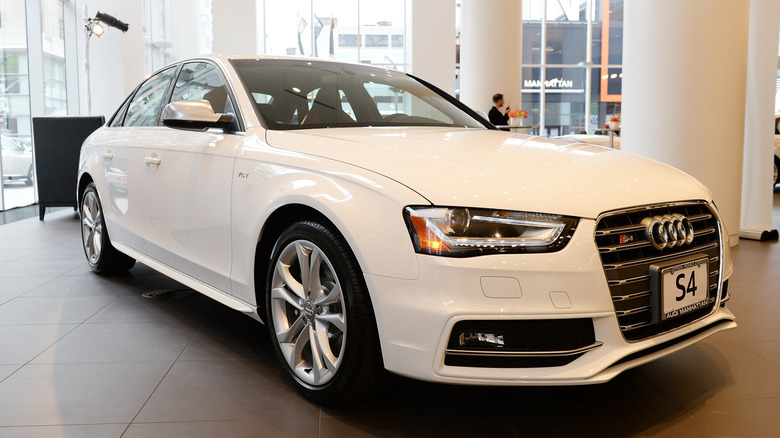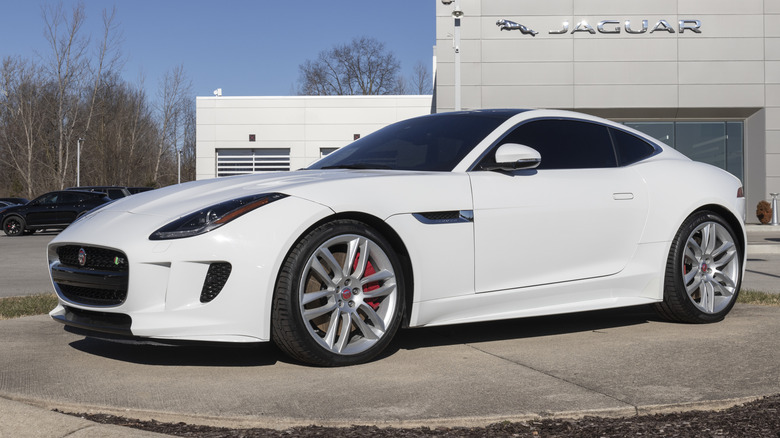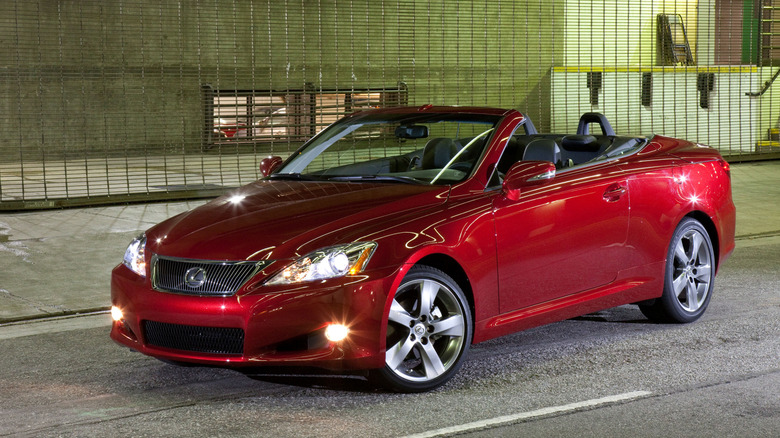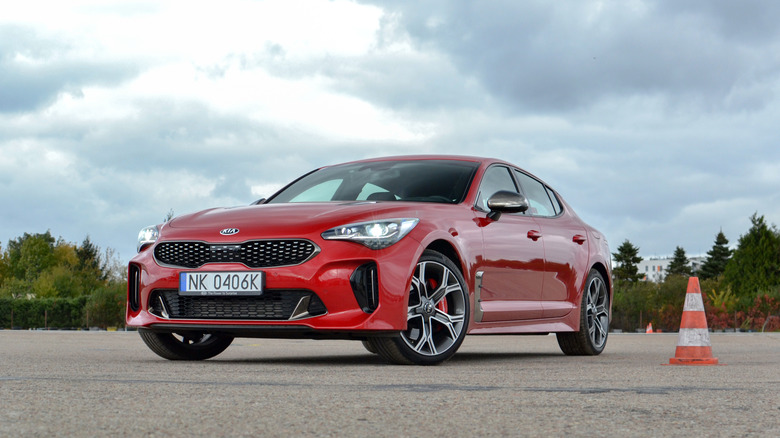10 Used Cars With V6 Power You Should Be Considering
Car enthusiasts love to talk about big engines with many cylinders. V8s, V10s, V12s, the whole nine yards. We've heard the argument that there's no replacement for displacement and it's almost guaranteed that the more cylinders an engine has, the more love it'll receive. While all of that might make sense, we think it's time to start giving some love to the V6.
The first production V6 engine was put together by a small, lesser known automotive outfit in Turin, Italy named Lancia. You may have heard of it. Lancia's Aurelia would go on to become the first production car with a V6 engine in 1950, and the layout has powered everything from hardcore supercars to hardcore minivans since then. Remember, despite fewer cylinders and a smaller overall size, V6 engines can get more powerful than everyone's favorite LS V8.
Today, there are dozens of great performance cars, but also some more unassuming cars that use some brilliant V6 engines. A lot of them have become complete bargains, and they're definitely worthy of your consideration the next time you're browsing interesting used cars.
Hyundai Genesis Coupe
To introduce the luxurious Genesis to North America at the tail end of the 2000s, Hyundai also brought in the Genesis Coupe, which was just about the last thing anyone expected to see from Hyundai. The Genesis Coupe was a RWD four-seater sports car designed to compete with the Nissan 370Z and the fifth generation Ford Mustang.
The Genesis Coupe had one major selling point over those two and all of its competitors at the time: it was way, way cheaper. Power came from either a 2.0-liter turbo four-cylinder engine, or the much sweeter 3.8-liter naturally-aspirated V6. By the end of the Genesis Coupe's run in 2016 this engine made a whopping 348 hp, and all of that went to the rear wheels through the buyer's choice of a proper three-pedal six-speed, or a six-speed automatic for those who preferred it.
The zero to 60 time was in the mid five-second range, which was plenty for a car of this type, and it definitely allowed the Genesis Coupe to mix it with the established players in the group. Unfortunately, the lack of brand image meant that the Genesis Coupe didn't exactly have the most successful life ahead of it. Nowadays, you can pick up a Genesis Coupe for less than a Nissan Kicks, and that's one of the cheapest new cars on sale today.
Toyota Venza
The 2000s really were an experimental decade for automakers, as there were fusions — some might say confusions — in model lineups everywhere. While everyone continues to make fun of stuff like the failed Lincoln Blackwood and Chevy SSR even to this day, there were some other less talked about amalgamations, like the Toyota Venza.
Before the Venza became a sleek hybrid crossover that met its premature demise in 2024, it was a — wagon? It's not entirely clear what Toyota was trying to do with the initial Venza design. It resembles a Camry, because it's based on the Camry, and it looks like a wagon, but it's also as tall as an SUV and it has some air of minivan about it. The latter two design aspects are mostly thanks to its bulky appearance.
Ultimately, this makes it a fascinating and very quirky family wagon with a ton of room on the inside. Of course, we can't forget about the powertrain. You could have the Venza with the oddly sized 2.7-liter four-cylinder, but you could also have the 2GR-FE 3.5-liter V6. That means you can tell people that your bizarro wagon SUV minivan has the same engine as the Lotus Evora.
Ford Taurus SHO
A deserved member of Ford's eclectic performance car club, the Taurus SHO is one of the brand's most fascinating models. It initially started out with a Yamaha engineered V6 engine, then it received a tiny V8 that was a collaboration between Ford and Yamaha. For the final generation of the Taurus, the SHO returned, this time with Ford's own in-house powertrain.
This time, it was Ford's EcoBoost V6. It was a 3.5-liter unit, which was pretty standard. What wasn't standard was the fact that the SHO also received two turbochargers for a total output of 365 hp and 350 lb-ft of torque. That gave the Taurus SHO a pretty good leg up over other full-size sedans of its day, and — as everyone later found out — the EcoBoost was capable of way more power.
Perhaps the best fact about the Taurus SHO is that you can have one for closer to $5,000. A lot of decommissioned police cars used the SHO's powertrain, and if you can find a relatively well kept one, you'll be able to enjoy the Taurus SHO experience for very little money. Of course, regular civilian SHOs are also very cheap nowadays, but a former patrol car is just cool.
Volkswagen Passat VR6
In 2012, Volkswagen stopped importing the European Passat for North America, opting instead to develop, design, and start selling a different Passat specifically tailored to the market. The final generation of Passat in America, also known as the NMS Passat, was a pretty major departure from the previous generations.
It was larger, and it was focused on the items that mattered most to North American buyers. This also meant some pretty sweet powertrains. For the first couple of model years, alongside the 2.0-liter diesel and the 2.5-liter I5, the Passat also received a 3.6-liter version of the fabled VR6. Technically, a VR6 is a little different from a V6, but we're still counting it as a narrow-angle V6 engine.
This would be one of the last ever VW models powered by the VR6 engine alongside the Atlas. Sure, the Atlas offers more practicality technically, but the Passat offers a much better drive, still a good amount of space, and attractive sedan looks. Of course, we can't forget that with the VR6 Passat you'll get one of the best-sounding engines you can have in an ordinary car.
Honda Accord V6 Coupe
There's no getting around the fact that the Honda Accord changed the way we buy cars in North America. Despite that — or perhaps because of that — the Accord is often lumped in with the Toyota Camry as a mundane commuter sedan that doesn't really stir the soul. Honda came up with an answer for that, though, with the Accord Coupe, which was first sold in the 1980s and continued to be updated until being discontinued in 2017.
This was Honda's answer to buyers who liked the Accord but wanted something a bit more exciting and something focused more on fun and less on all out practicality. The final two generations of the Accord Coupe look very similar, which is to say, surprisingly attractive. Just one look makes it clear that the Accord Coupe means business.
This is reflected in the powertrain and drivetrain, too. The 2016 Accord Coupe was offered with a 3.5-liter naturally-aspirated V6 engine, also known as the J35. The J35 is something of a legend in the Honda community, and it did its service very well in the Accord Coupe, putting out 278 hp by the end of the Coupe's run. Paired up with a six-speed manual transmission, the Accord Coupe was an excellent driver's car, regardless of the fact that it was still FWD.
If you want an attractive coupe with heaps of reliability and a masterpiece of an engine, good news — the Accord Coupe is still pretty affordable. We're not sure how long that affordability will last, though.
Mercedes C350 4MATIC (W204.5)
In late 2000s German automakers began to see the potential in producing diet versions of their compact performance sedans. BMW gave us the beloved 335i, and that's typically the one that gets all of the attention thanks to the car's tunability and the engine's similarities to the legendary Toyota 2JZ. However, the 335i wasn't your only option during this time, as Mercedes had something very similar.
The C350 4MATIC had always been a part of the W204 generation's lineup, but it previously only made 280 hp from its 3.5-liter V6 engine. When the C-Class was facelifted for model year 2012, Mercedes upped the power to 302 hp, which is just a bout the same output as produced by the F30 335i that would come out a year later.
With this, the C350 4MATIC became a pretty good way to have a fast Mercedes on a relatively smaller budget. You can pick up a C350 4MATIC for not a lot of money now, and the M276 under the hood remains a brilliant, smooth powertrain that is a perfect balance of performance and comfort, as befits a Mercedes. Just be wary of some of the reliability concerns with this engine, though they can easily be avoided if the car has been well maintained and you continue to take care of it properly.
Audi S4 (B8)
For much of the 2000s, Audi's S4 used essentially the same powertrain as the RS4, albeit with a little less power. You could probably imagine the outcry when Audi fans heard that the B8 generation S4 would switch to a V6 powertrain. Except, as it eventually turned out, this was no ordinary V6 engine.
The B8 S4 arrived for the 2010 model year and it was one of a handful of Audi's performance cars to arrive in North America. Keep in mind, this was still an era when Audi was still unsure about the RS brand's success. Power came from a 3.0-liter V6 that, despite carrying a TFSI or T designation, was actually supercharged instead of turbocharged. Power was a handy 333 hp, and the 325 lb-ft of torque was actually better than its V8-powered predecessor.
This has led some enthusiasts to call the S4 the German Hellcat, as it's one of the only German cars to produce a supercharger whine under acceleration. Like most other Audi performance cars, it's a solid performer that will definitely put a smile on your face. The best part? You could have it with a manual transmission from the factory. Yes, even in the U.S. and Canada. A B8 S4 these days is a total bargain, and it's actually pretty reliable if you take care of it.
Jaguar F-Type S
After 50 years of a two-seater sports car-sized hole in the lineup, Jaguar finally gave us the F-Type in 2013. The idea was very simple — a two-door, two-seater sports car designed to go to battle with the Porsche Boxster, with your choice of either V6 or V8 power, and your choice of either a folding soft top or a fixed roof coupe. All three of the engines offered on the F-Type were supercharged, it was just a matter of how much power you wanted. Did we mention it's also gorgeous?
The base F-Type came with a 3.0-liter supercharged V6 putting out 340 hp, but the sweet spot in the lineup for a lot of buyers was the F-Type S, featuring the same supercharged V6 but with power increased to 380 hp. Thanks to the relative lack of weight over the front axle, the F-Type S is also a belter in the corners.
Later versions of the F-Type even allowed you to pair this engine with AWD and a six-speed manual transmission, but those were short-lived. Eventually, it became clear that the F-Type was not safe from the catastrophe that is Jaguar depreciation. When it was new, it cost more than the Boxster and Cayman. These days, you can pick one up for the same kind of money as a new Honda Civic Hybrid. For a supercharged sports car with one of the greatest engine notes in modern cars, that's a pretty good deal.
Lexus IS350
Let's imagine, for a second, that neither a 335i or a C350 4MATIC will scratch the compact sports sedan itch for you. Don't worry, there's still the Lexus IS. The second generation Lexus IS was a bit of a letdown for fans of the JZ inline-six, as this generation would switch over to V6 power. The most powerful of the XE20 IS models — not counting the V8 powered IS F — was the IS350.
As the name implies, under the hood is a 3.5-liter naturally-aspirated V6 putting out a plentiful 306 hp. The IS350 manages to match the 335i without using forced induction, which is very impressive. The interior may be a little bit cramped, but there's heaps of luxury and comfort, as well as a good amount of niceties and features.
You probably knew this was coming, but the IS350 has one major leg up over its German counterparts in reliability. Lexus vehicles are famous for taking an absolute beating no matter what you decide to do with them, as evident in all the high-mileage IS Fs running around. The IS350 is no different, and assuming it's been well-maintained, you'll get a fantastic sports sedan with all the right ingredients, plus significantly less headaches and worries about durability. It's a win-win. You can even have a convertible if that's more your thing.
Kia Stinger GT
If you were to tell someone 20 years ago that Kia was coming out with a performance sedan to rival the likes of the BMW M340i, you would probably be laughed at — or cussed out — for thinking such a ridiculous thing. In 2017, however, that's exactly what Kia did.
The Stinger GT was an attractive sports sedan that arrived just as the world finally started to take Kia's cars seriously. The stunning bodywork concealed a gem of a RWD platform and either a turbo four-cylinder engine or, more interestingly, a 3.3-liter turbocharged V6. In the right hands, the Stinger GT really has the chassis engineering and the punch to give the established Germans something to worry about.
Not bad for a Kia, right? There, in fact, lies the problem. Despite the good intentions, there was still a bit of a brand image issue, and things did not end up too well for the Stinger, as it was discontinued in 2023. Today, you can pick up a Stinger for about the same amount of money as a brand new Seltos. We know which one we'd rather have.
